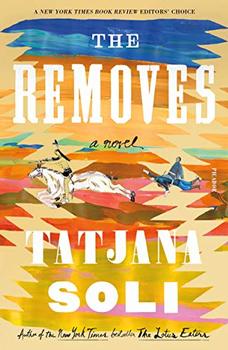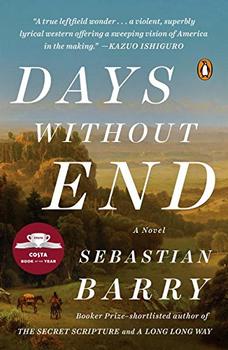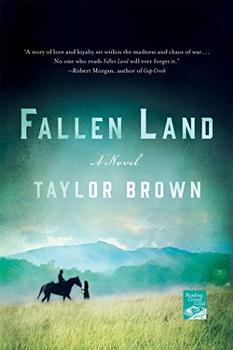Summary | Excerpt | Reading Guide | Discuss | Reviews | Beyond the book | Read-Alikes | Genres & Themes | Author Bio

Most students of American history are familiar with "Custer's Last Stand" – the battle between U.S. forces led by Lt. Colonel George Armstrong Custer (1839-1876) and Native American tribes, which took place along the Little Bighorn River on 25-26 June, 1876. The fight was a decisive defeat for the cavalry, leaving 268 dead (including Custer) and 55 wounded. Few, however, are familiar with the life of Custer himself, or the circumstances that led up to the battle. Tatjana Soli takes on this complicated subject in her latest historical novel, The Removes, creating a fictional biography of Custer from his days as a Civil War hero to his death on the Montana plains.
The story is separated into three alternating parts. The main body focuses on Custer himself, using a wide range of historical sources such as letters and newspaper articles to form a portrait of the man, his actions and his rationale for various decisions he made throughout his life. Soli's depiction of him seems quite realistic; one minute he's portrayed as a prig, more interested in looks, fame and protocol than the well-being of his men, the next seeming a world-weary soldier appreciating his foe but at the same time realizing they could not survive the greed of white men. On being ordered to survey for gold in the Black Hills of the Montana territory, Custer says to his native interpreter: "Many years from now there will be towns and cities, ranches and farms here. There will be no room for either you or me." He thinks to himself: "At the first word of the discovery of riches to be unearthed, an unstoppable deluge of opportunists would break the law to come. The Sioux would murder, and the army would retaliate. A simple equation: gold equaled war. It was not a question of if, but when." It's a nuanced characterization, and Soli's ability to produce such balance is impressive.
Supplementing Custer's tale is that of Libbie Bacon Custer, who grew up a pampered socialite but matured into a true officer's wife, stoically following Custer into the wilderness as he is placed in command of various frontier forts during his time as a cavalry commander. The author's ability to bring Libbie to life is equally noteworthy, particularly toward the end when she mourns the loss of a husband she truly loved.
Rounding out the novel is the captivity of Anne Cummins, a fifteen-year-old girl whose family was attacked and killed by a group of Cheyenne. This character is fictional, but the author bases her on numerous contemporary accounts penned by women who'd likewise been captured and then returned to white civilization. Although plot-wise I thought this thread the more interesting one, I found the choice to include it curious; the story occurs during roughly the same time period as those of George and Libbie Custer but has almost no overlap with those tales and seems like it could have been a separate, stand-alone book - and perhaps would have been stronger as such.
Especially entrancing are Soli's descriptions of the beauty of the American frontier; many times she paints vivid pictures of the seemingly endless plains. As Libbie rides into Fort Riley, Kansas with her husband's 7th Cavalry, she contemplates the view before her:
They were a small, ill-fitting troop dropped in the great, desolate wasteland known as the Great Plains, which stretched through the territories in all directions, with hardly a soul per square mile in population. It was still commonly referred to as the Great American Desert – a desert of the senses most certainly if not of the land. The vastness all around dwarfed its inhabitants. The wind was a constant that varied from breeze to gale, wicking away every drop of moisture and replacing it with dust. From the ramshackle, mud-splattered little fort one looked out on … emptiness … a maddening, gloomy landscape in its lack of feature. In every direction were gently undulating mounds of grass that changed from green to gold to gray as the seasons passed. The only things above a man's height were the thirsty cottonwoods that huddled the reed-choked, stingy rivers.
The Removes will appeal to those who enjoy historical fiction, particularly those interested in America's Old West and the conquering of the frontier. This well-written novel would make a great book group selection as well; Soli's attention to historical detail is a stand-out, and many of the questions she raises about the settling of The Great Plains remain relevant today.
![]() This review was originally published in The BookBrowse Review in August 2018, and has been updated for the
September 2019 edition.
Click here to go to this issue.
This review was originally published in The BookBrowse Review in August 2018, and has been updated for the
September 2019 edition.
Click here to go to this issue.

If you liked The Removes, try these:

by Sebastian Barry
Published 2017
Moving from the plains of Wyoming to Tennessee, Sebastian Barry's latest work is a masterpiece of atmosphere and language. An intensely poignant story of two men and the makeshift family they create with a young Sioux girl, Winona, Days Without End is a fresh and haunting portrait of the most fateful years in American history and is a novel never ...

by Taylor Brown
Published 2017
Searching for a home in a ravaged landscape, two star-crossed lovers flee a ruthless band of bounty hunters, from the Blue Ridge Mountains of North Carolina to Sherman's March through Georgia in the final years of the Civil War.
The library is the temple of learning, and learning has liberated more people than all the wars in history
Click Here to find out who said this, as well as discovering other famous literary quotes!
Your guide toexceptional books
BookBrowse seeks out and recommends the best in contemporary fiction and nonfiction—books that not only engage and entertain but also deepen our understanding of ourselves and the world around us.